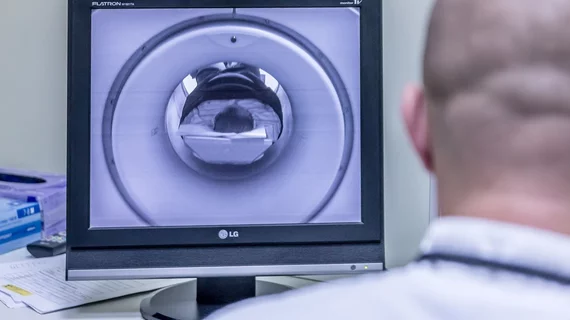Fast MRI protocols reduce exam times and increase efficiency. The approach is becoming a larger part of radiology, with proven success in abdominal and pediatric imaging. But many in the field hold opposing views on whether it does more harm than good
Imaging experts from two top institutions shared their arguments for and against abbreviated exams on Tuesday, in pieces published by AJR.
On the one hand, Naveen Subhas, MD, MPH, with the Cleveland Clinic, says shorter exam times in musculoskeletal MRI can improve access and bring down ballooning healthcare costs. But on the flip side, two University of California, San Francisco, experts argue the approach can harm patients and also contribute to physician burnout.
Subhas, with the clinic’s Imaging Institute, noted that MRI’s limited availability and high costs are directly related to its lengthy exam time. Reducing this duration, he argued, can spread the fixed price of scanners across the entire system and decrease the average price of an exam.
“Reducing examination times also increases patient throughput and access while reducing wait times. Shorter examination times also improve patient comfort and examination tolerability,” Subhas added. “Despite these potential benefits, MRI examination times have not substantially changed over the past two decades.”
Rina Patel, MD, and Thomas M. Link, MD, PhD, both with UCSF’s imaging department, acknowledged the benefits of abbreviated protocols but cautioned radiologists to be aware of the potential negatives as well.
A shorter protocol is not always appropriate, they noted, and the referring physician must agree to it. Changes can affect diagnostic confidence, alter surgical planning and even strain the rad-clinician relationship for future referrals.
Radiologists also need to think about their own well-being, the pair argued. Shortening protocols is designed to increase the number of exams rads can read, which would thereby require them to interpret more images each day. This is associated with visual fatigue and burnout. Both can negatively impact accuracy and open physicians up to more malpractice lawsuits.
Each side of the coin agreed that abbreviated exams shouldn’t be a one-size-fits-all approach and must be based on many factors, such as the institution and patient’s injury.
“Abbreviated musculoskeletal MRI protocols are part of our future, but radiologists should be cautious about heavily implementing these protocols without first considering the potential negative impact on quality of care and radiologist wellness,” Patel and Link wrote.
Subhas cited the regular use of low-dose CT exams as a potential blueprint. LDCT sacrifices image quality for less radiation exposure.
“If we apply this rationale to MRI, providing longer examinations that are the most comprehensive with the highest image quality to only a few patients may cause more harm than performing shorter, targeted examinations with lesser but still diagnostically acceptable image quality for more patients,” he added. “Perhaps it is time that we adopt a similar paradigm for MRI: examination times that are as short as reasonably achievable.”
You can read both pieces published in the American Journal of Roentgenology here and here.

